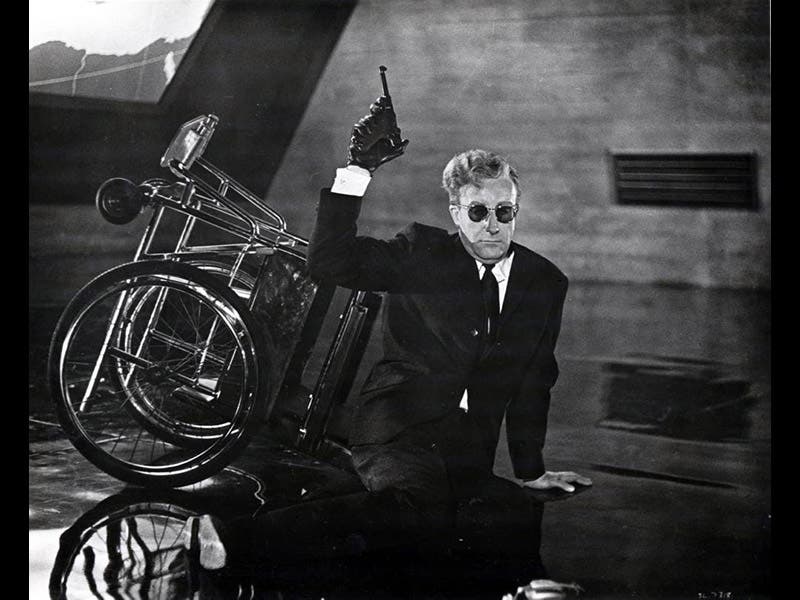Scientist of the Day - Dr. Strangelove
The film Dr. Strangelove: Or, How I Learned to Stop Worrying and Love the Bomb premiered on Jan. 29, 1964. The film was directed by Stanley Kubrick and introduced one of the most unforgettable mad scientists in the history of cinema, Dr. Strangelove. The movie came out at the height of the Cold War and plays on the folly of nuclear deterrence and the absurdity of the concept of mutually-assured destruction. Dr. Strangelove is an ex-Nazi who is now the U.S. director of weapons research and development and advises the President on nuclear matters; he is wheelchair-bound, and he has a prosthetic right arm that periodically snaps into a Nazi salute that Strangelove's left arm vainly attempts to suppress. A renegade U.S. SAC base commander has launched his B-52s to attack Russia, trying to provoke an American First Strike. The most delicious scenes take place in the War Room, where it is revealed by the Soviet ambassador that the Russians have developed a Doomsday Machine that will automatically detonate an underground mega-mega-ton nuclear weapon in response to a First Strike by the United States, even if there are no humans around to retaliate. Until that moment, the Americans knew nothing about the Soviet device. Strangelove is interesting because, crazy though he appears to be, he is really the only sane one in the War Room, the only one who understands that nuclear deterrence will not work unless each side knows exactly what the other is up to. As Strangelove says in one of his many memorable lines, after the existence of the Doomsday Machine has come to light: "Yes, but the whole point of the Doomsday Machine is lost... if you keep it a secret! Why didn't you tell the world, eh?" You can see the entire scene in this four-minute clip. Both President Muffley and Dr. Strangelove are played by Peter Sellers.
Neither Kubrick nor Peter George, who wrote the novel Red Alert (1958) that inspired the film, revealed on whom the character of Strangelove was based, but it is generally agreed that he was modeled primarily on Herman Kahn, a nuclear strategist for the RAND Corporation (which Strangelove calls the BLAND Corporation in the film), and the one who dreamed up the Doomsday Machine. The German past of Strangelove (his German name was Merkwürdigliebe, we learn) was probably drawn from one part each of Wernher von Braun, Henry Kissinger, and Edward Teller (who was however Hungarian, not German). The prosthetic arm and black glove were no doubt an homage to Rotwang, the original cinematic mad scientist, whom we featured in this space just three weeks ago. Who knows where the idea for Strangelove’s mechanical-muscle-memory salute came from, but that was pure genius.
Dr. Strangelove will be featured in our upcoming exhibition: It’s Alive. Frankenstein at 200: The Science Behind the Story. The exhibition will open Mar. 15, 2018, and one section will be devoted to famous mad scientists in film history, where you will be able to see movie posters and memorabilia related to Rotwang, Dr. Strangelove, Dr. Frankenstein, and a host of other cinematic scientific heavies.
Dr. William B. Ashworth, Jr., Consultant for the History of Science, Linda Hall Library and Associate Professor, Department of History, University of Missouri-Kansas City. Comments or corrections are welcome; please direct to ashworthw@umkc.edu.










